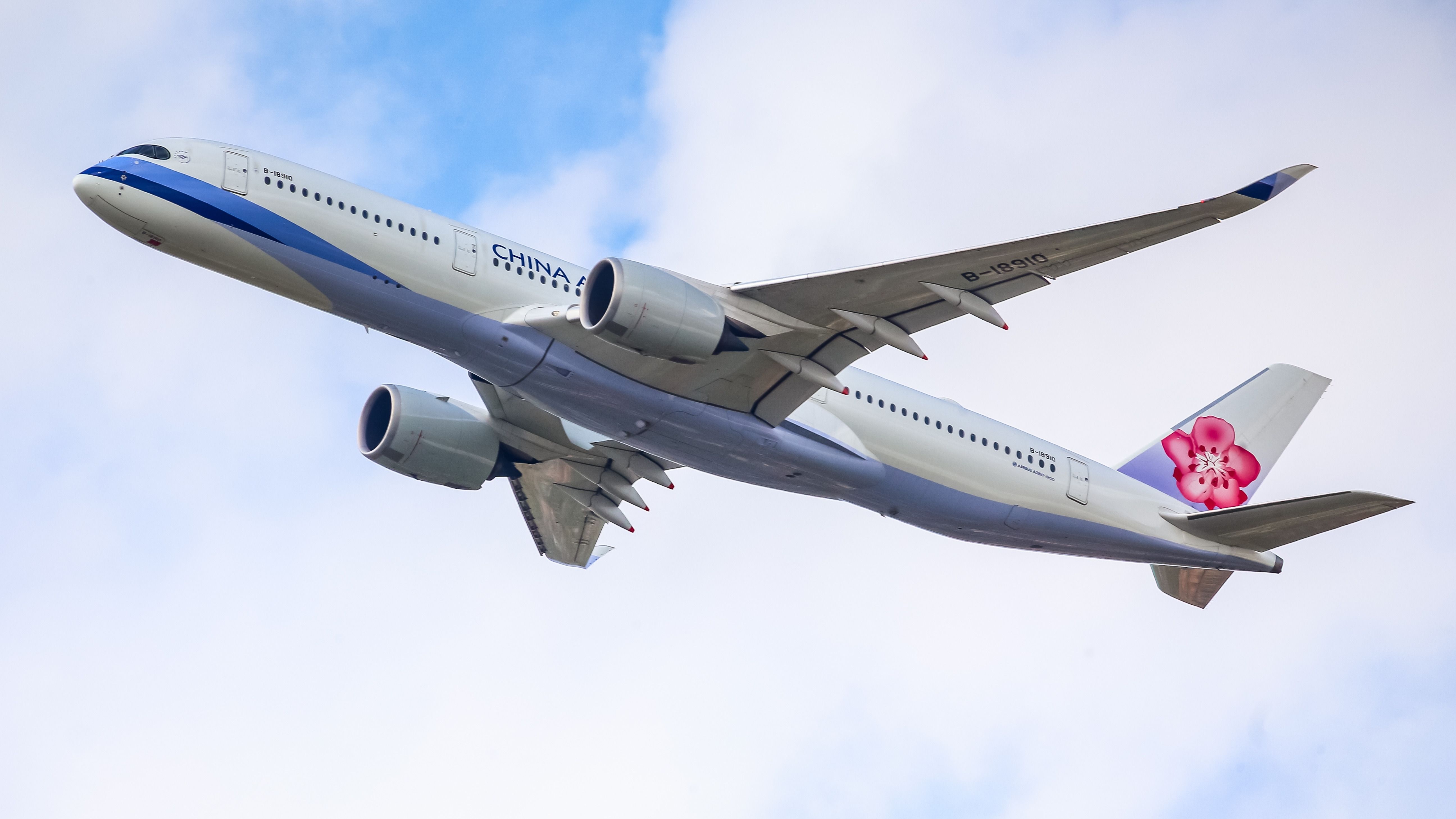Unless you are deeply involved with or interested in the aviation industry, or have traveled to and from the island of Taiwan before, you may not have even heard of China Airlines. Outside of Asia, it’s possible to see the carrier’s aircraft at specific key hubs with its aesthetic pink plum blossom livery representing Taiwan’s national flower. Whether because of political tension in recent years or due to the microchip industry, more people have come to know about Taiwan in the last few years (and fewer are still confusing it with “Thailand”...). But how much do you know about the flag carrier of this Pacific island?
1 It’s not a Chinese airline
This should be apparent from the opening paragraph, but it’s worth reiterating. Although the company is called “China Airlines,” it has never been headquartered in mainland China. Yet, still today, there are people who see “China Airlines” painted on a big Airbus widebody and assume it’s going anywhere except Taiwan.
CI dates back to 1959, more than ten years before the Republic of China (ROC/Taiwan) lost its UN seat to the People’s Republic of China (PRC); understanding this makes the airline’s name less surprising. As CNN reported, there were multiple instances where China Airlines (among a list of Taiwanese companies caught in this geopolitical naming issue) have been asked to rebrand. However, at least for the flag carrier, this has yet to happen.
2 From humble beginnings
China Airlines was founded in December 1959, approximately ten years after the ROC government relocated to the island of Taiwan. According to its website, at the time, it had just 26 employees and three aircraft in its fleet: one Douglas C-54 Skymaster and two PBY amphibious planes.
Today, the carrier boasts just over 11,000 employees, of which 9,540 work at one of the various airports dotting the island and over 1,500 working abroad. CI also now has a very modern fleet, currently featuring many more Airbus airliners than those from Boeing; however, there are plenty of the latter on the way.
3 Largest fleet in the nation
Taiwan isn’t home to very many airlines, though many readers recognize there are the two premier carriers, China Airlines and EVA Air, which have recently been joined by the quickly-growing Starlux Airlines. However, according to information provided by ch-aviation, the state-owned flag carrier has the most aircraft of all passenger operators, with as many as 90 in its fleet, counting those that are stored or in maintenance.
These come in the form of 10 Airbus A321-200NXs, 21 A330-300s, 14 A350-900s, 12 Boeing 737-800s, 10 777-300ERs, 16 747-400FSCDs, and seven 777-200Fs). Meanwhile, EVA Air lags behind by a single aircraft with 89 total, the vast majority being 777-300ERs, though it extensively utilizes the A321-200 for more regional routes. The gap will eventually widen, as ch-aviation shows CI has nearly 50 aircraft on order, while their main competitor is only waiting for delivery of another 14.
4 More destinations than the competition
Not counting codeshare and partner flights, as EVA is a member of the Star Alliance, China Airlines has the most extensive passenger route map of any Taiwanese airline to complement its impressive fleet. Comparing CI and its primary subsidiary, Mandarin Airlines, with EVA and UNI Air, the former connects 75 destinations throughout Asia, Oceania, Europe, and the Americas.
Meanwhile, the largest competitor serves just over 65 cities, covering the same continents. Notably, Neither of the two airlines fly passengers directly to Africa, the Middle East, Central America, or South America, so passengers flying to those areas of the world will need to utilize either SkyTeam or Star Alliance connections.
5 China Airlines has a great callsign
There are many interesting callsigns around the globe, a topic that deserves its own article, but CI’s is rather notable. Where EVA Air’s callsign is simply “EVA,” China Airlines’ is “Dynasty.” As complicated as Chinese history is, most people understand that there were various dynasties and their leaders who ruled for a very, very long time.
Boiled down (and skipping several critical historical events), the Republic of China succeeded the Qing Dynasty and is currently present on the island of Taiwan. One local government agency is the China Aviation Development Foundation, which owns China Airlines. Not only is Dynasty a fitting callsign for the state-owned carrier, but it also uses this name for various other related entities, such as its loyalty program, Dynasty Flyer.
New hometown rival Starlux also has a particularly fun callsign, “Starwalker.” As explained by Aeronews just before the airline commenced operations, it was partially inspired by the classic American film series’ Star Wars’ and selected by the CEO, Chang Kuo-wei, former EVA Air pilot and executive (and son of the larger Evergreen Group’s founder). With the fledgling carrier seemingly thriving despite its first flight in late January 2020, just before Asian aviation tanked for much longer than the rest of the world, it will be interesting to see how it holds up against Taiwan’s legacy flag carrier in the coming years.
Have you ever flown with China Airlines? Let us know your experience in the comments below.
Sources: China Airlines, CNN, ch-aviation, Aeronews






